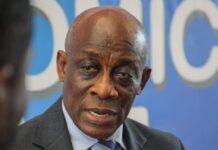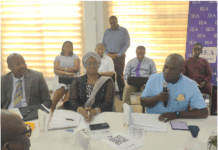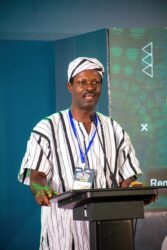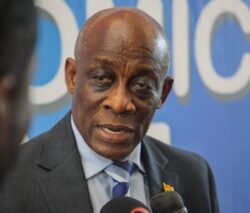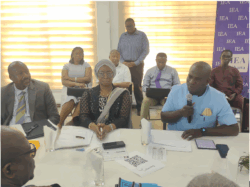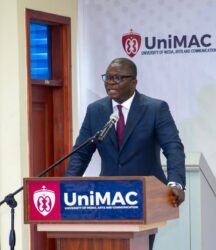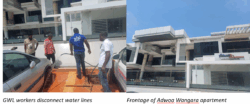By Kofi AKPABLI
Festivals are becoming relevant for the development of the nation. A trend now is to identify and execute development projects. It is worth noting that communities have resolved to harness their identities, values and nature-given resources, streamlining them into the national development agenda.
The Hogbetsotso festival, comes off at Anloga this weekend and from all indications, this year’s edition promises to be one of a kind. Strategically occurring toward the end of the year, Hogbetsotso appears to climax a year where festivals, nationally, have made the right waves all year long.
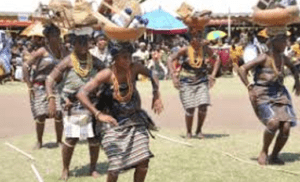
Another reason is the courtesy appearance of high-profile chiefs from other traditional areas. Though not uncommon, this trend has been gathering momentum and has become a much more pronounced feature of major Ghanaian festivals.
Indeed, in 2022, the grand durbar hosted the Asantehene His Majesty, Otumfuo Osei Tutu II. This year too, Hogbetsotso will not disappoint in that regard as Osabarimaa Kwesi Attah II – Oguaa Paramount Chief and Osagyefo Oseadeeyo Agyeman Badu II – Paramount Chief of Dormaa are among other royalties to be hosted.
This year’s festival, which brings together the chiefs and people of the Anlo State, is on the theme ‘Strengthening Bonds and Embracing Our Shared Heritage’.
Locally known as Hogbe’za, this edition has seen a high profile fund-raising dinner at Movenpick Hotel in Accra. The event was also an awards night for distinguished sons and daughters of Anlo who have made Ghana and Africa proud.
The 2024 event has also registered the appointment of some well-meaning and impactful sons and daughters of the soil as Hogbetsotso Ambassadors. Thus, the influence levels have gone a notch higher.
In the Ewe language, ‘Hogbe’ can be translated to mean ‘the day of the liberation journey’ while ‘tsotso’ refers to ‘commemoration.’ Essentially, Hogbetsotso is a festival that signals an uprising against tyranny. The annual event is celebrated by the Anlos who, with the larger Ewe group migrated from Southern Sudan, settling in Nigeria before arriving in Togo after settling in Benin as well.
Today, the Anlo people are spread across several constituencies, including Keta, Anloga, Ketu North, Ketu South, Akatsi North, Akatsi South and parts of the Tongu areas.
Legend has it that the people escaped from a tyrannical ruler of Notsie called King Agorkorli, by walking backwards. They achieved this feat under the leadership of Amega Wenya and Tɔgbi Sri I. In order to commemorate the exodus and the bravery of their traditional rulers who led them on the journey, the people created this annual’Festival of the Exodus’.
There are many ceremonies associated with the festival, most of them behind the scenes. There is a purification ceremony of the traditional stool and a period of general cleaning and cleansing. The cleansing ceremony begins at the Volta Estuary and goes on for days until it finally reaches the Mono River in the Republic of Benin.
Of course, an essential aspect of the festival is the grand durbar. The Awoamefia and his Chiefs dress in very colourful regalia and sit in state to receive homage from their subjects. The main durbar always takes place on the first Saturday of November in Anloga.
This year’s edition of the vibrant and culturally rich event was officially launched in Tsiame, a community in the Keta Municipality of the Volta Region. The launch event featured speeches from several notable figures, including Ing. Dr. Ken Ashigbey, the Chief Executive Officer of the Ghana Chamber of Telecommunications and Ambassador Dr. Samuel Dotse, the Chief Executive Officer of the HATOF Foundation.
Ambassador Dan Abodakpi, the Aworme Zitor (Stool Father of Awormezi), inaugurated the Hogbe Planning Committee for the 2024 festival, which is headed by Mr. Ken Kpedor. The event was graced by other dignitaries, including Awadada Agbesi Awusi II, the Paramount Chief of Anlo, some Members of Parliament and parliamentary candidates. The opening ceremony drew its own special crowd, signalling a rapturous finale come Saturday, November 2.
This climax was preceded by a mini Hogbe festival in Alakple in the Anloga District as well as the ‘Children’s Hogbe’, which will take place across various communities in the greater Anlo region and beyond. The ‘Children’s Hogbe’’ which occurs on the eve of Hogbetsotso is a platform to engage young ones on the importance of their heritage.
Other key social activities planned as side attractions are various games and sports competitions, pageants and music festivals. These events are designed to foster unity and celebrate the rich cultural heritage of the Anlo people.
Key traditional activities include the Nugbidodo (reconciliation rituals), a ban on drumming and noise-making. These rituals are integral to the festival, reflecting the deep spiritual and cultural significance of the event.
Festivals in Ghana bring communities together. This helps to initiate development projects and to contribute financially toward them. Visitors who come to witness the festival contribute economically to the locality. At the political level, governments also capitalise on the festival, bringing people together to announce development projects or policies to the people and to educate them on important issues affecting the locality, town or area.
Without a doubt, Hogbetsotso is one of Ghana’s most important cultural events celebrated with much pomp and pageantry. The festival provides the platform to showcase the rich traditions, customs and history of the Anlo people, offering a unique opportunity for cultural exchange and tourism.
See you at Anloga!



